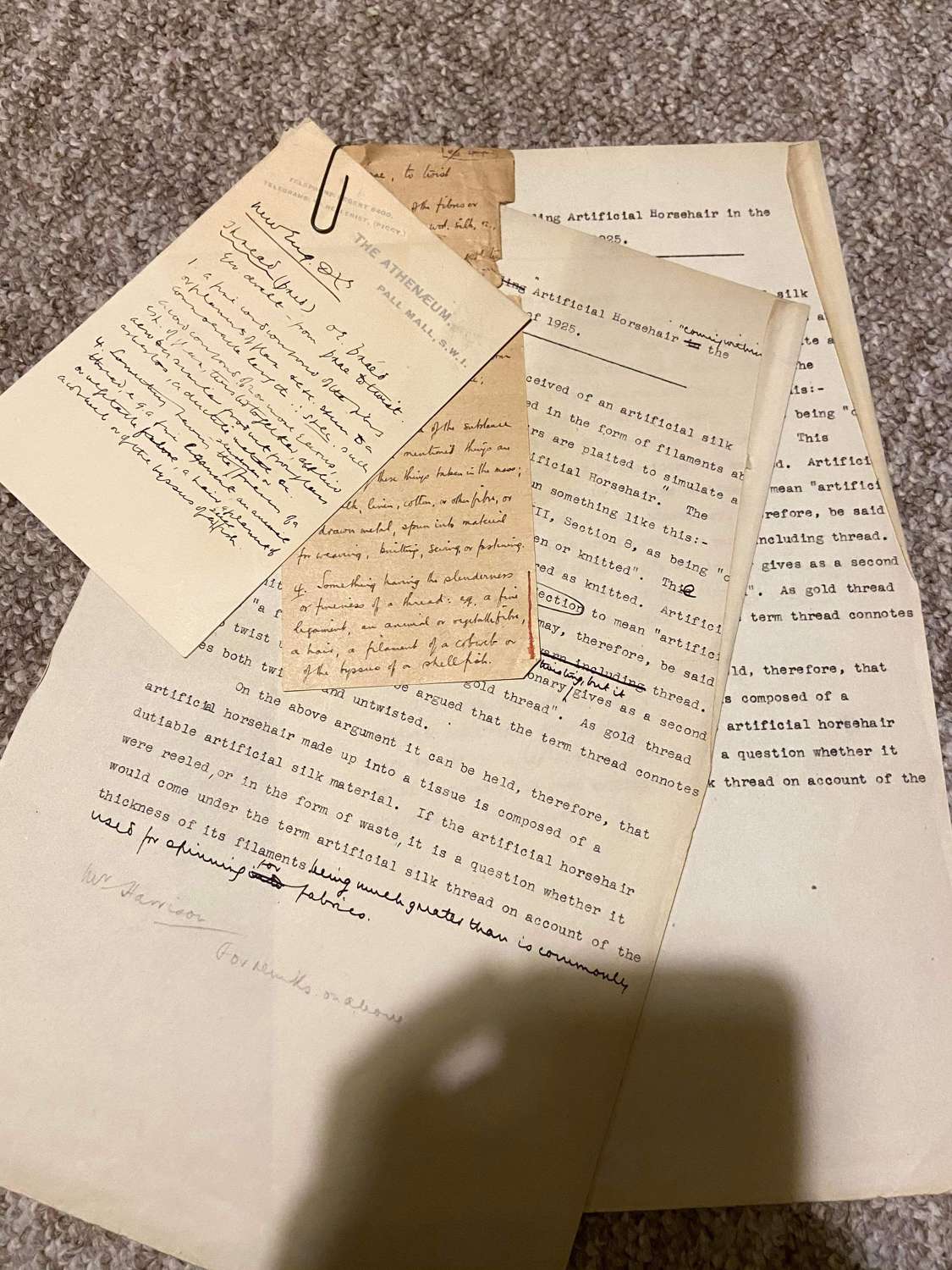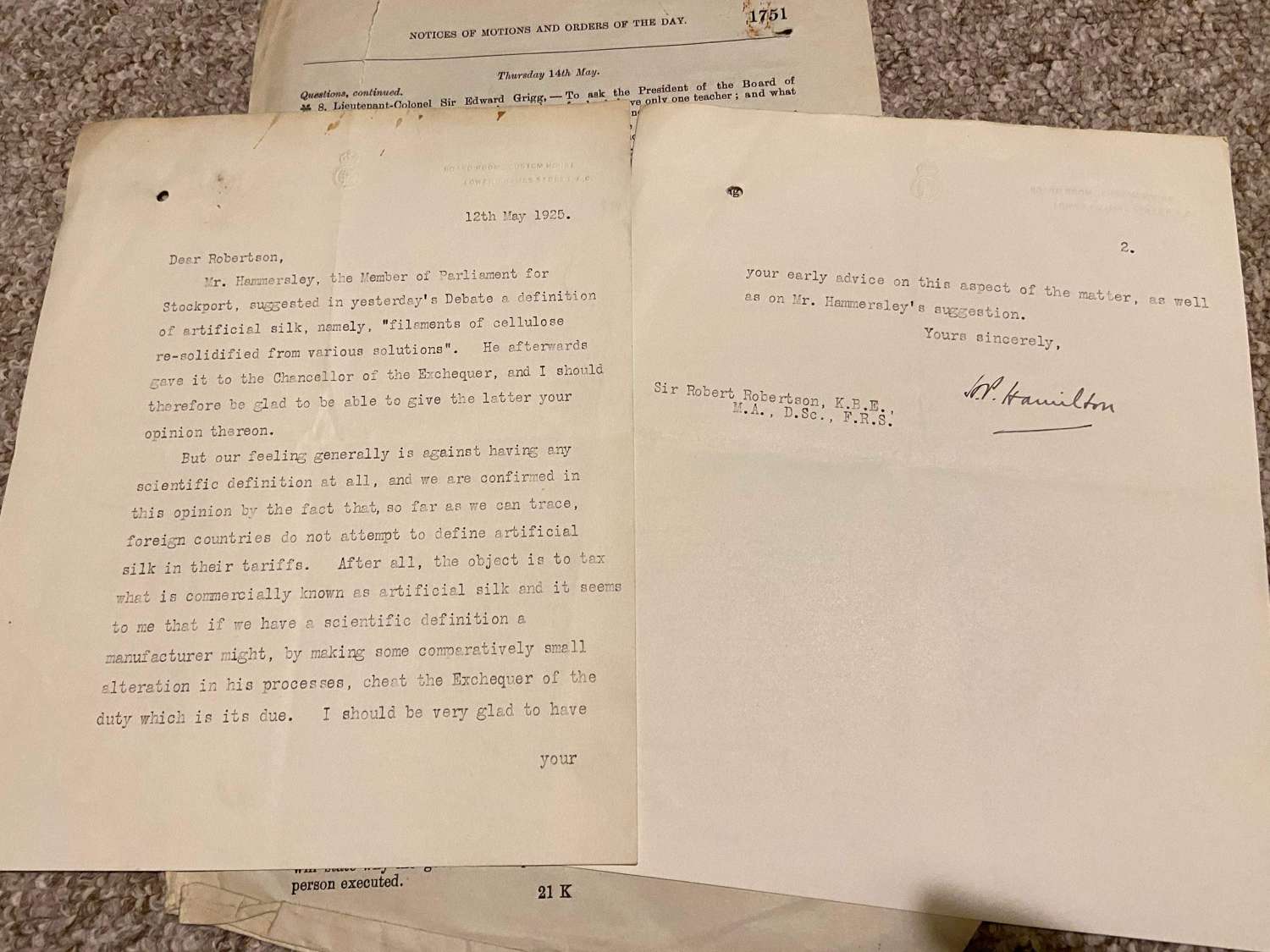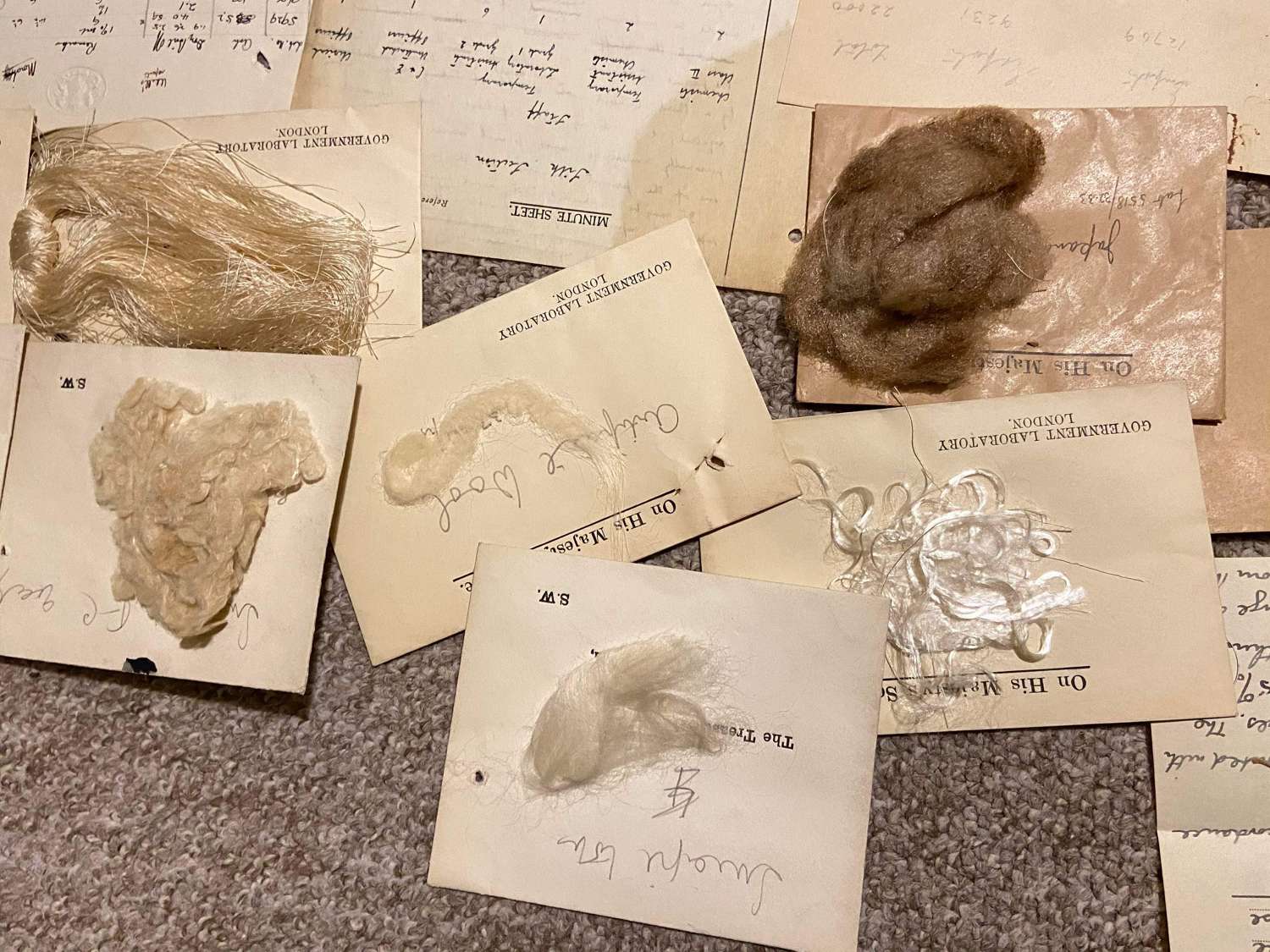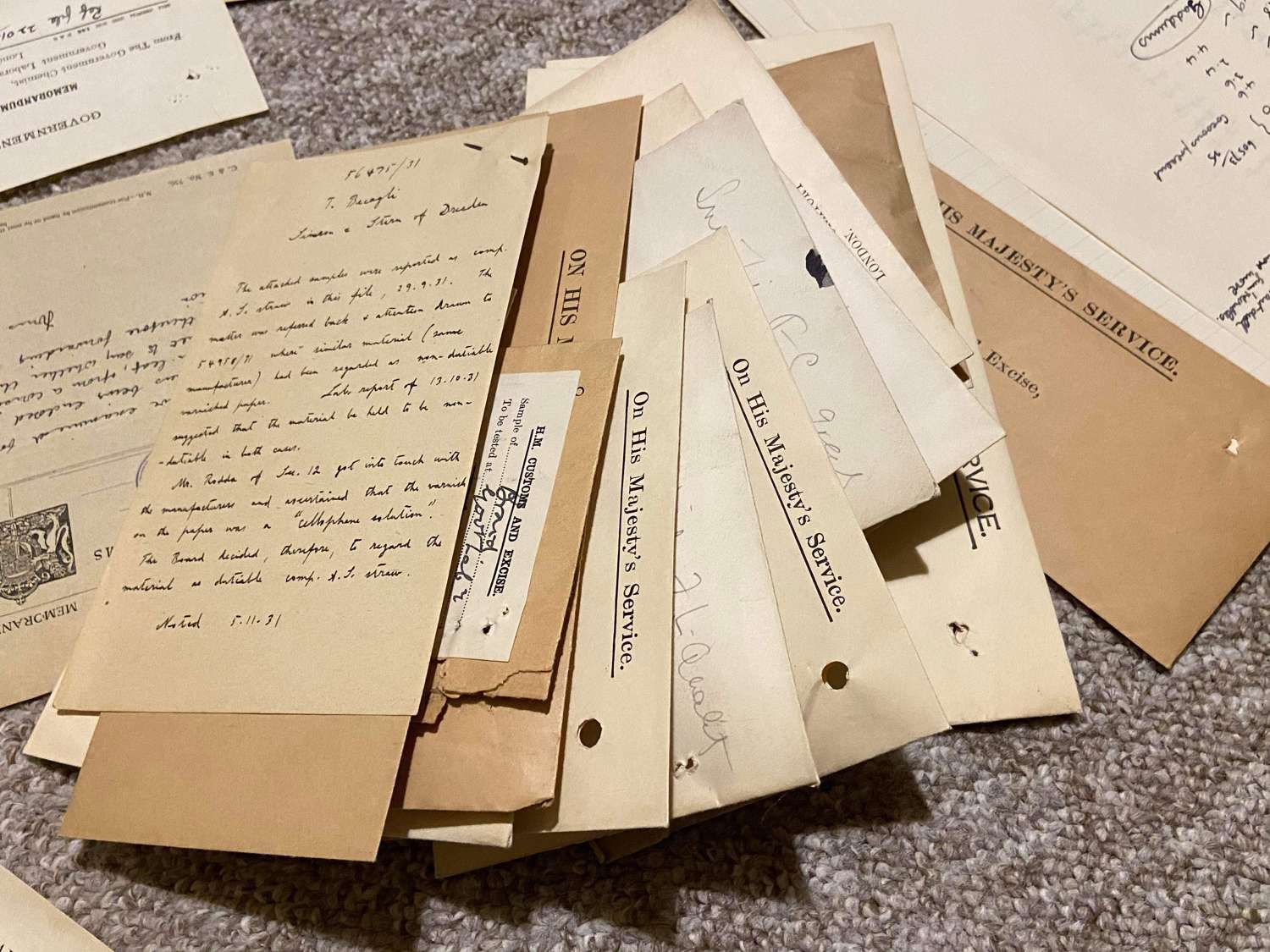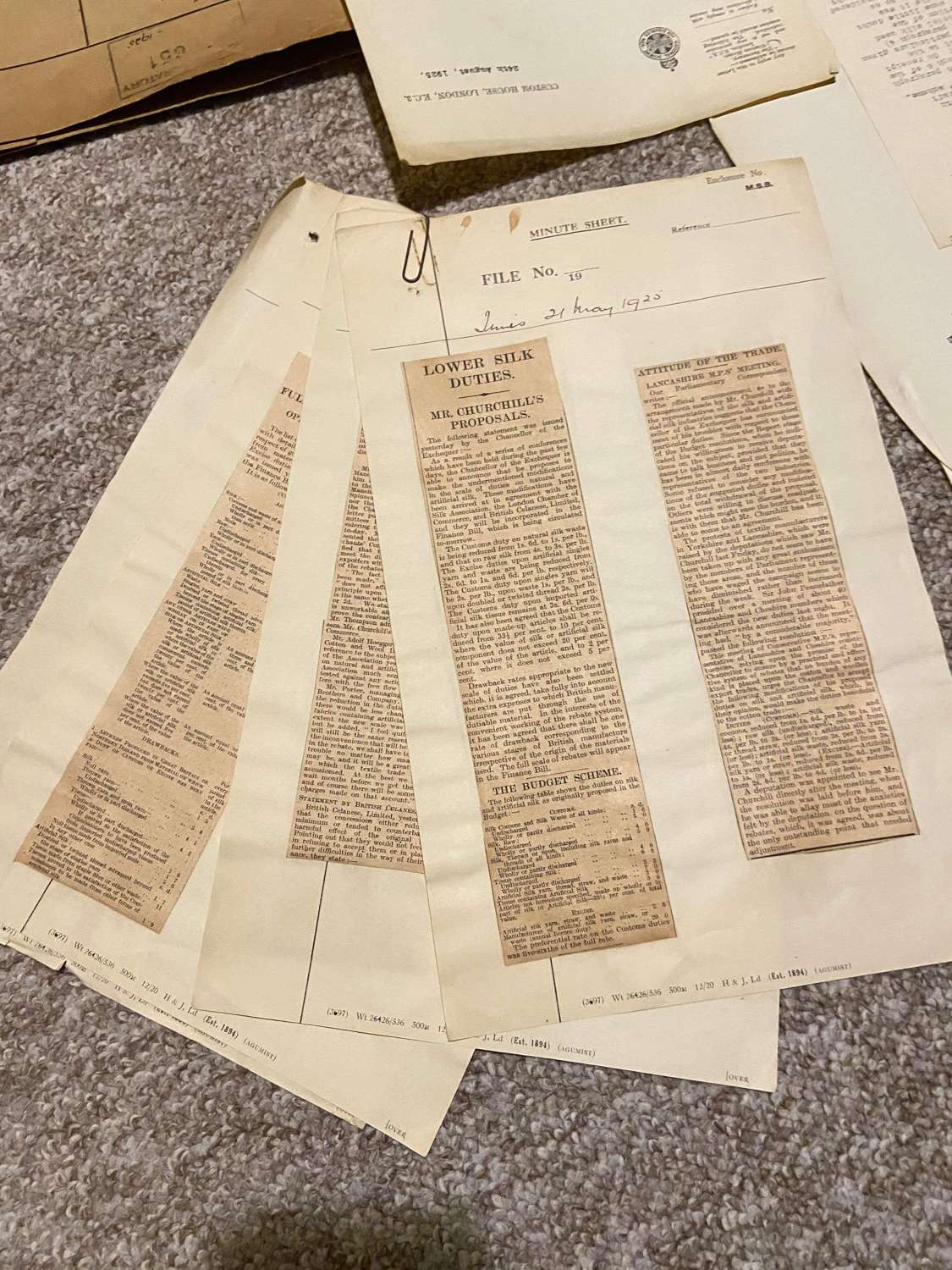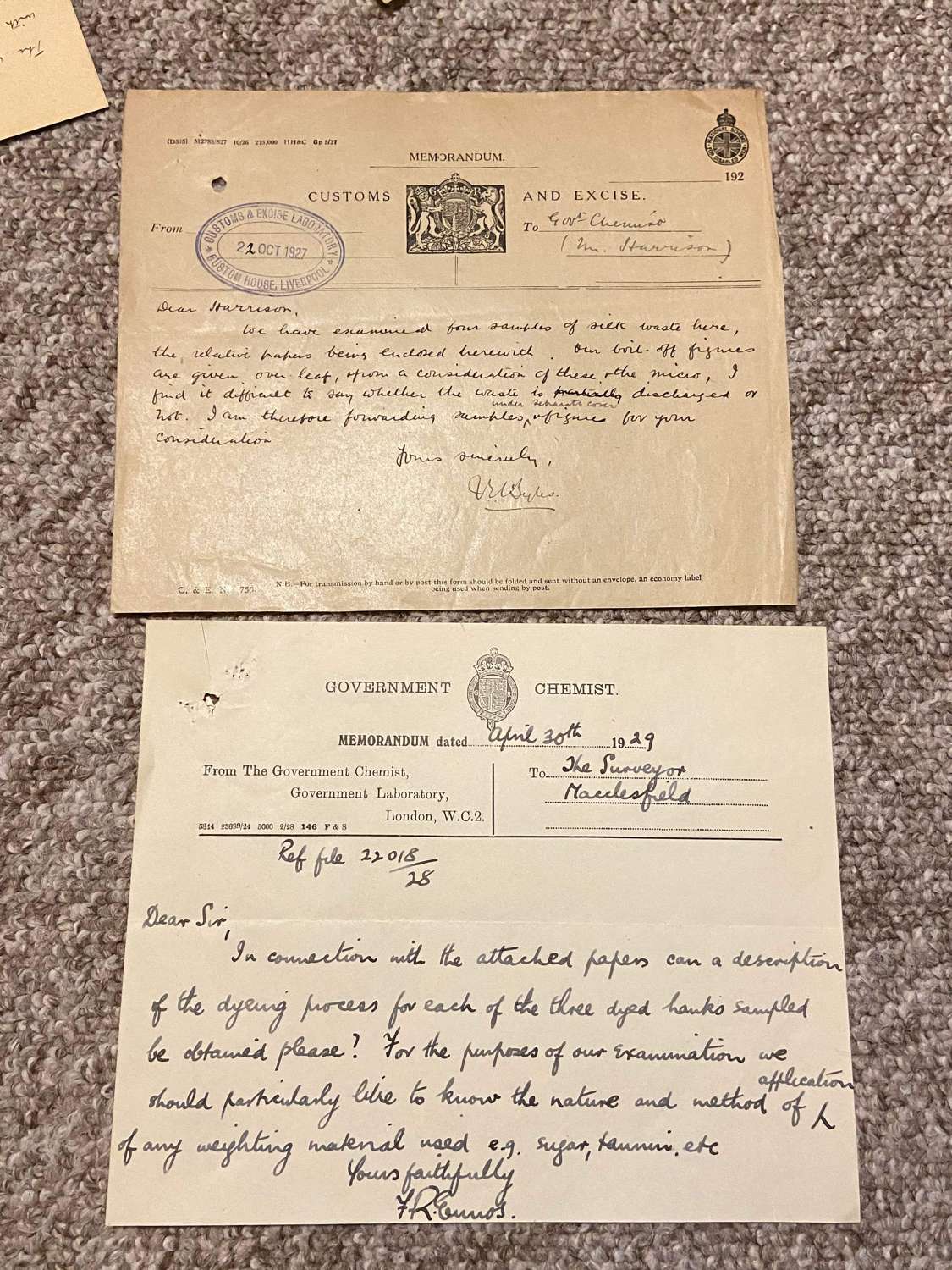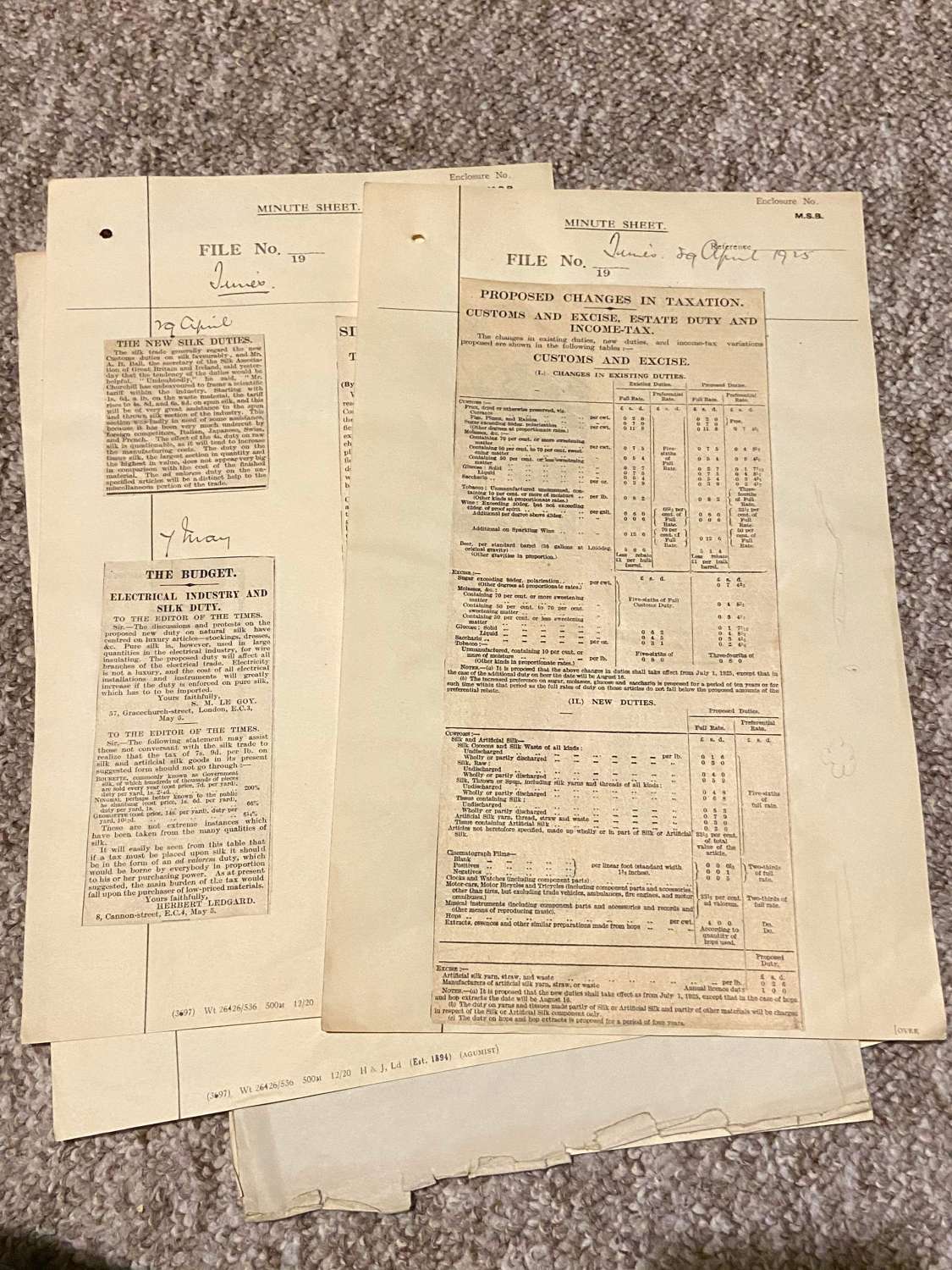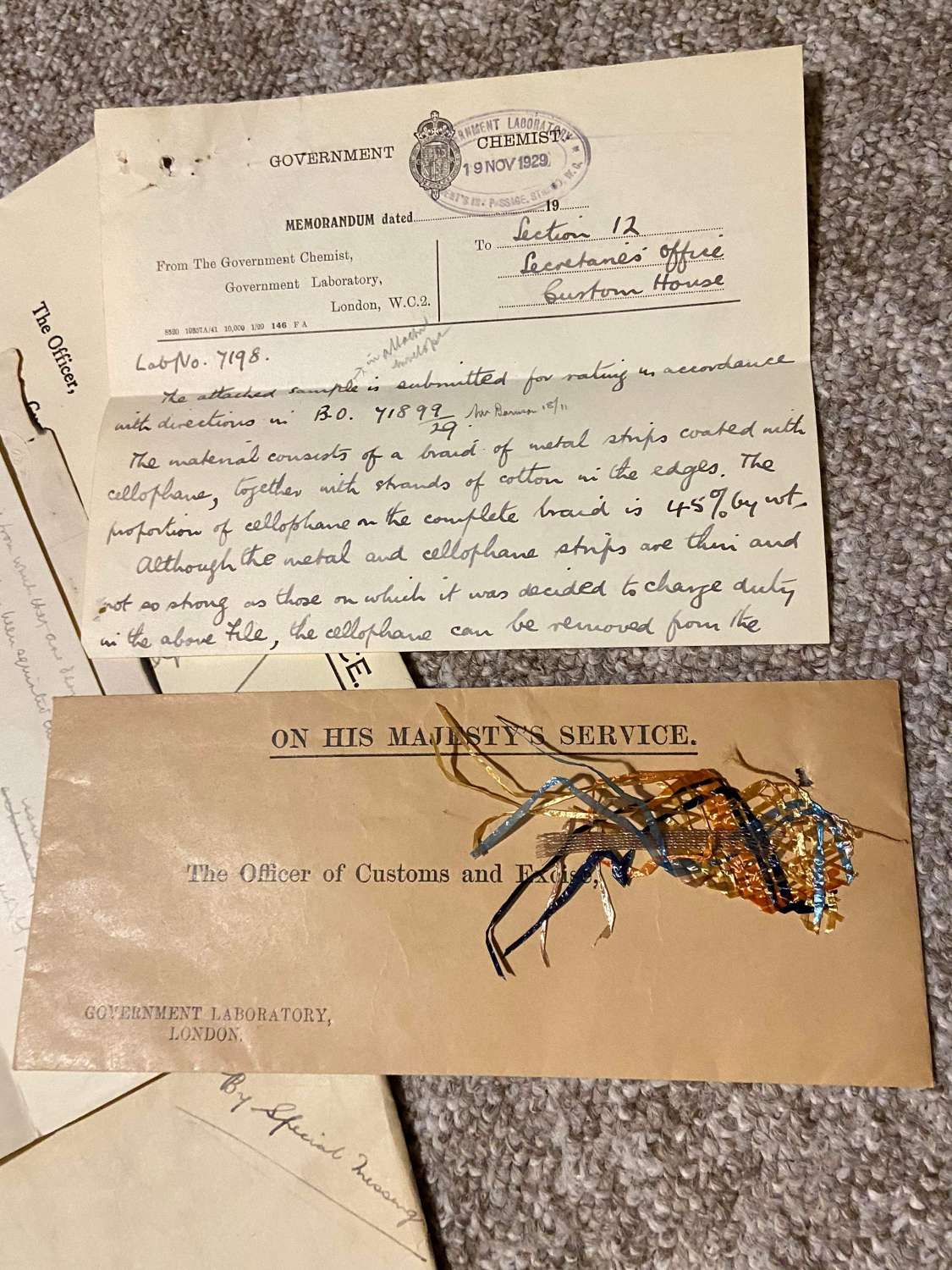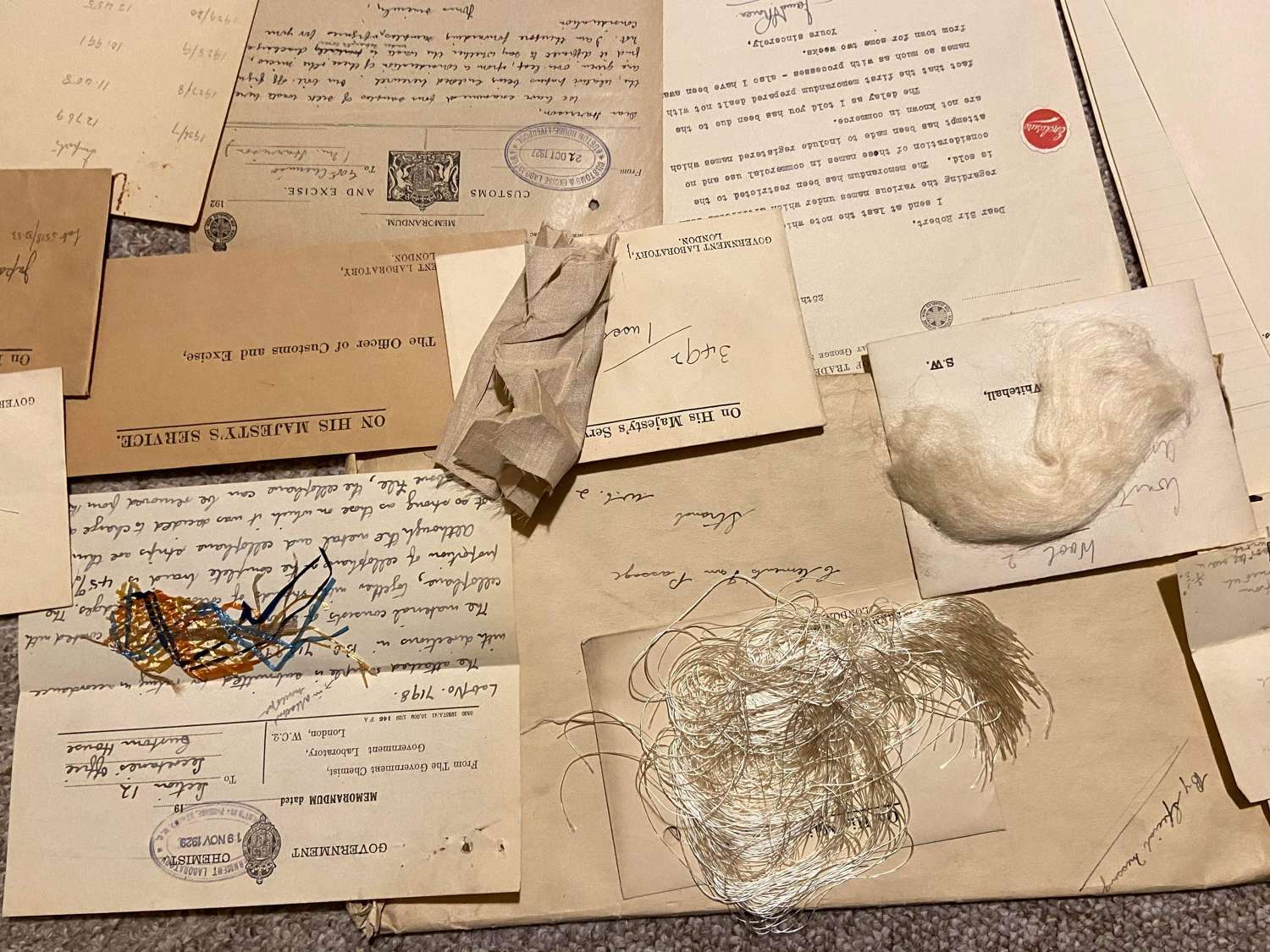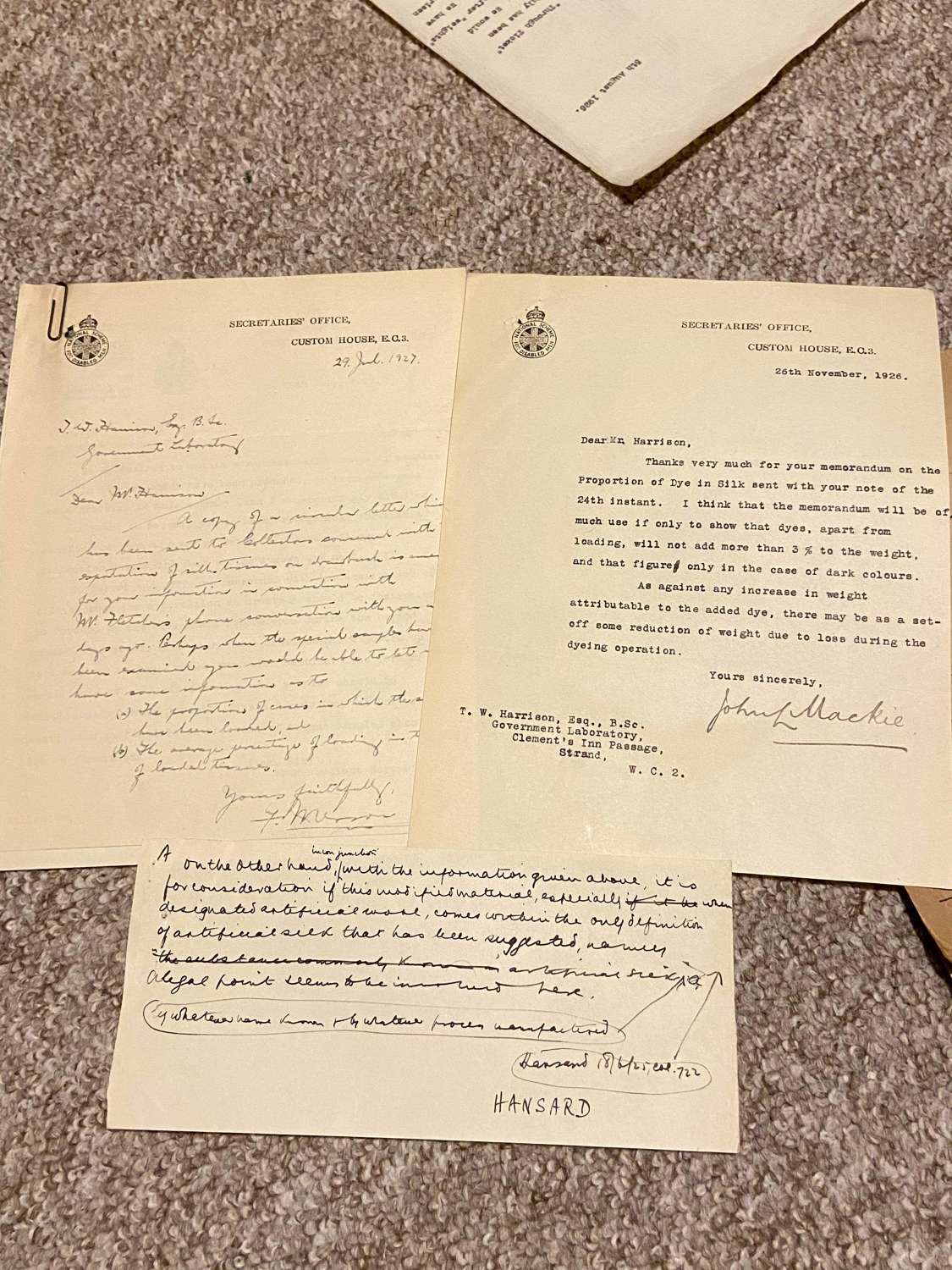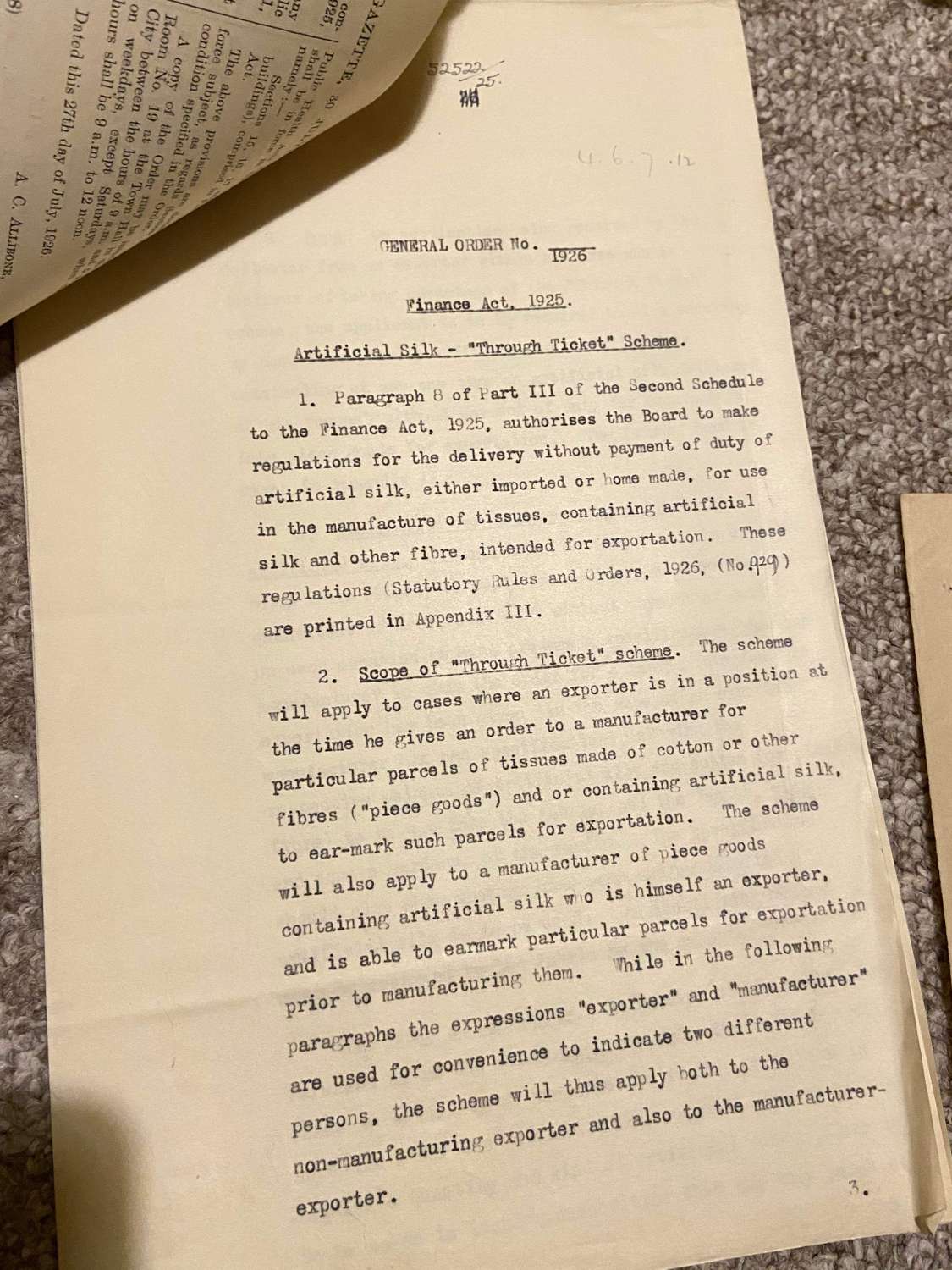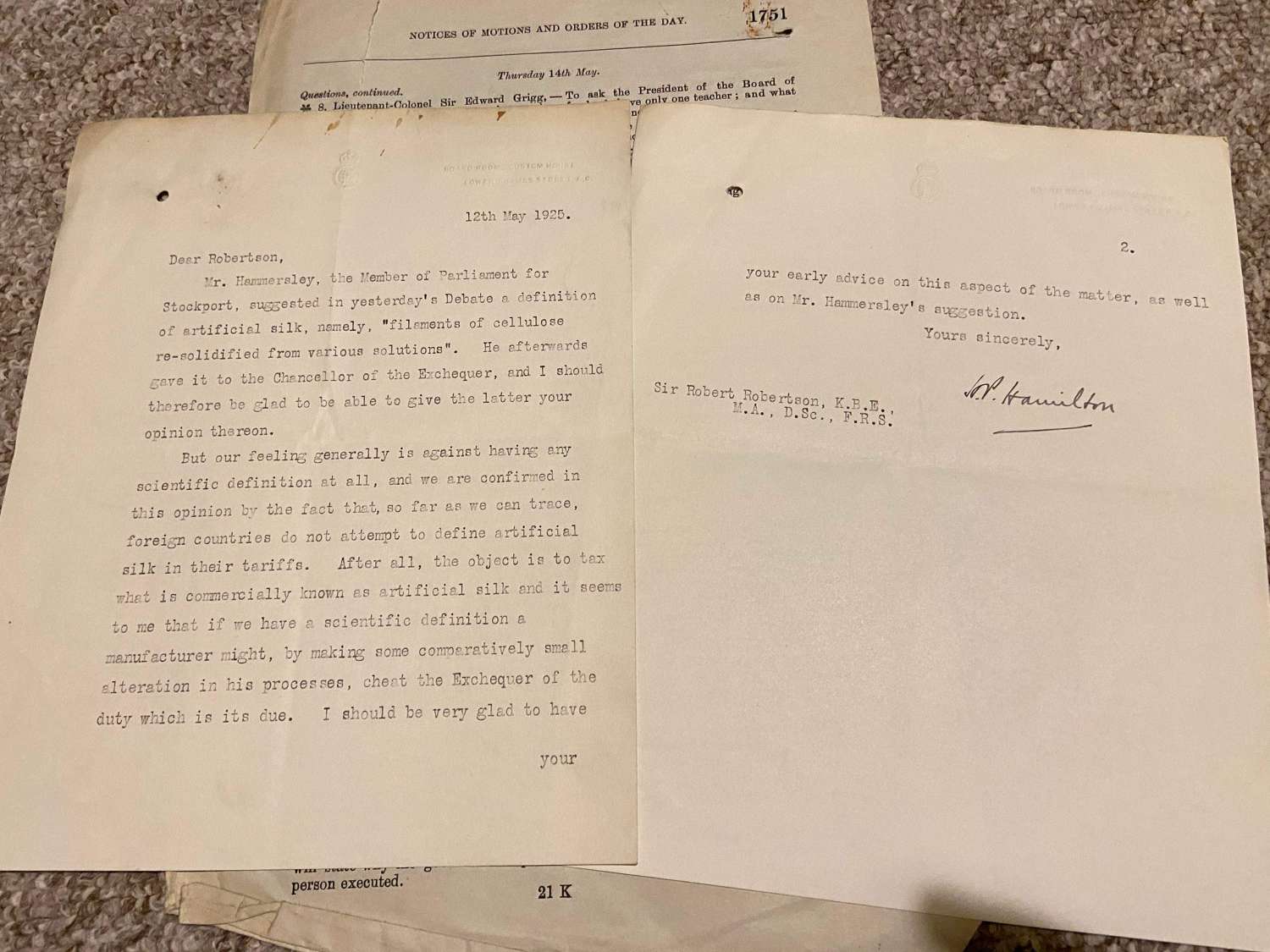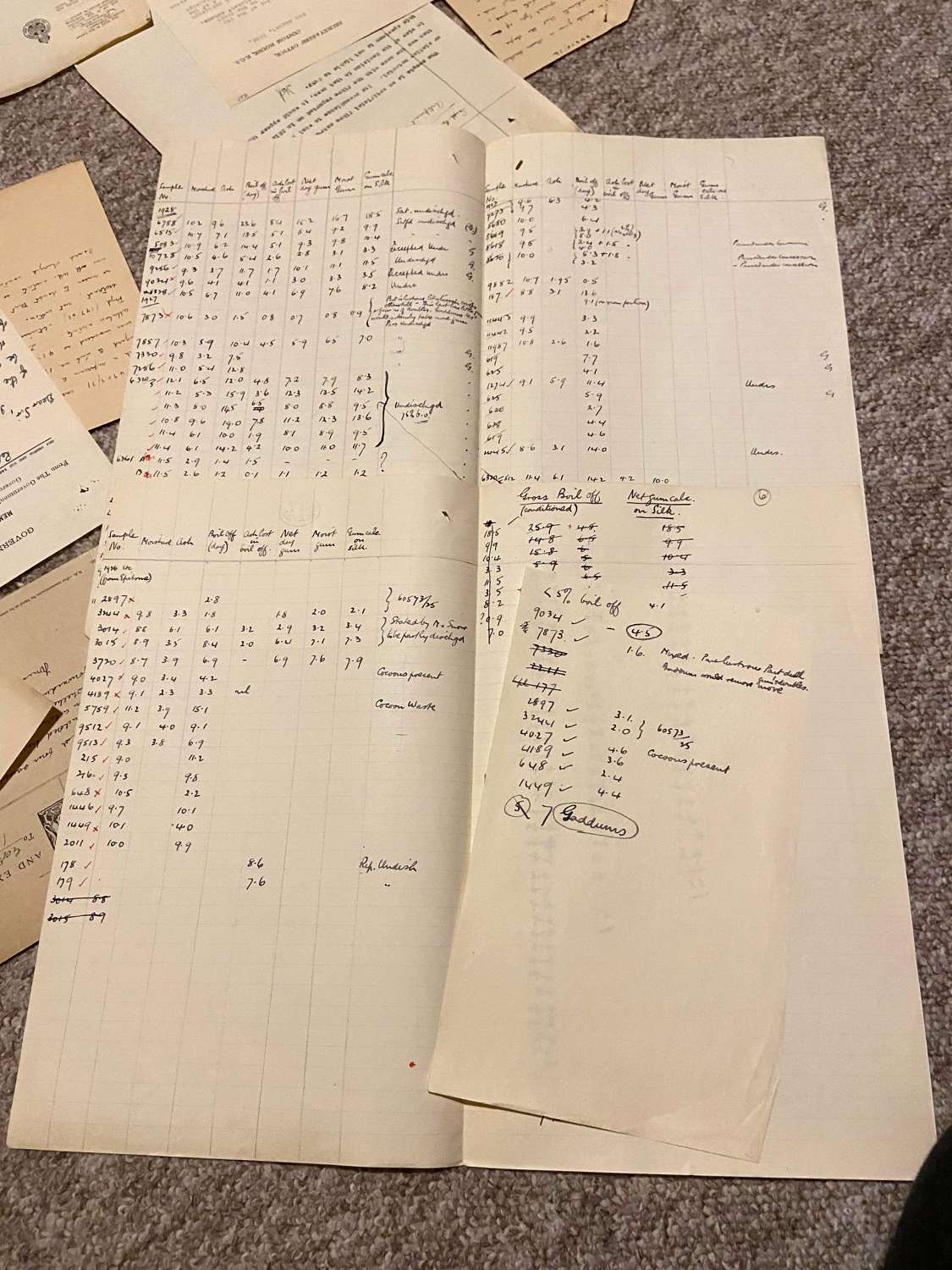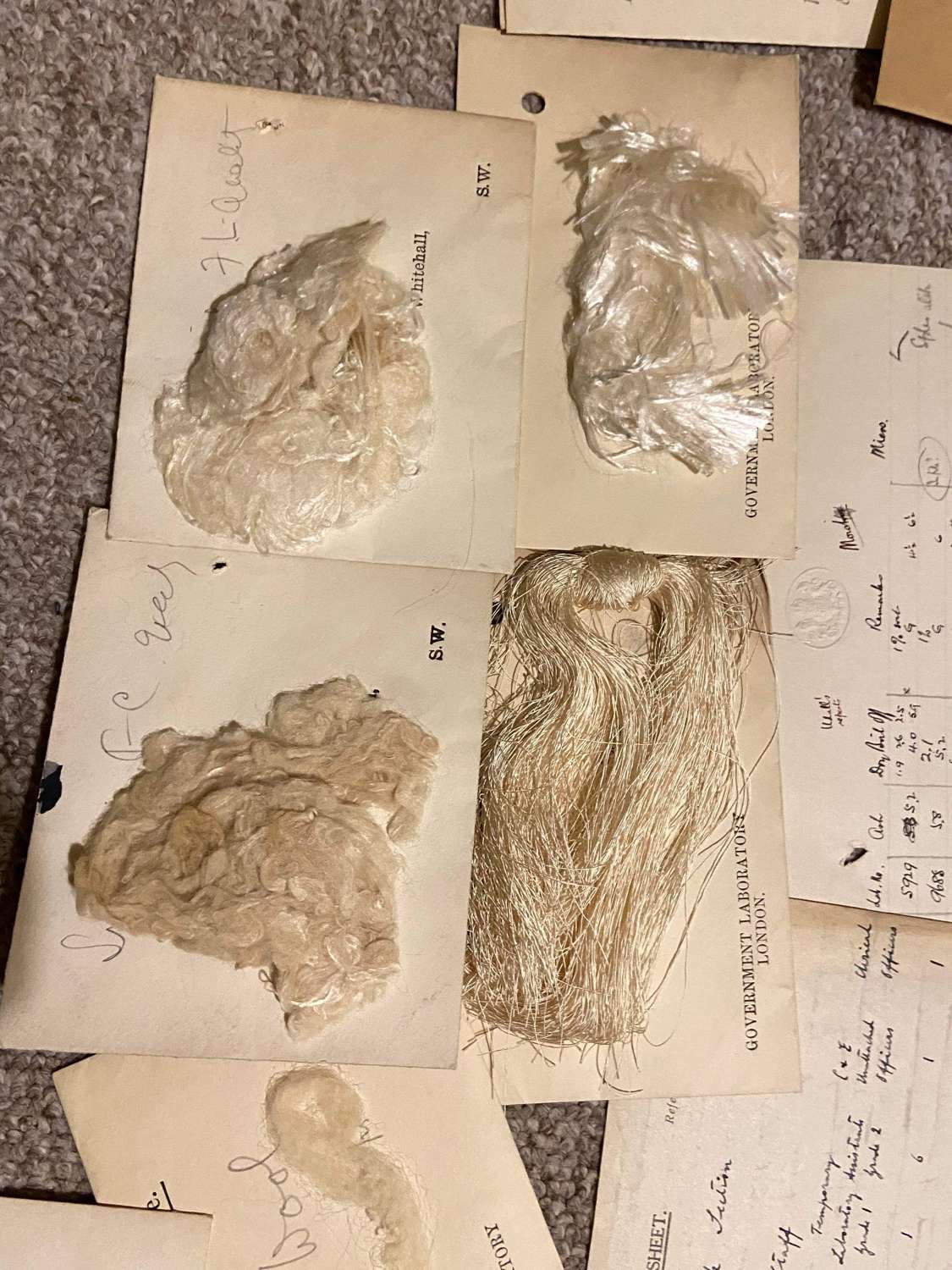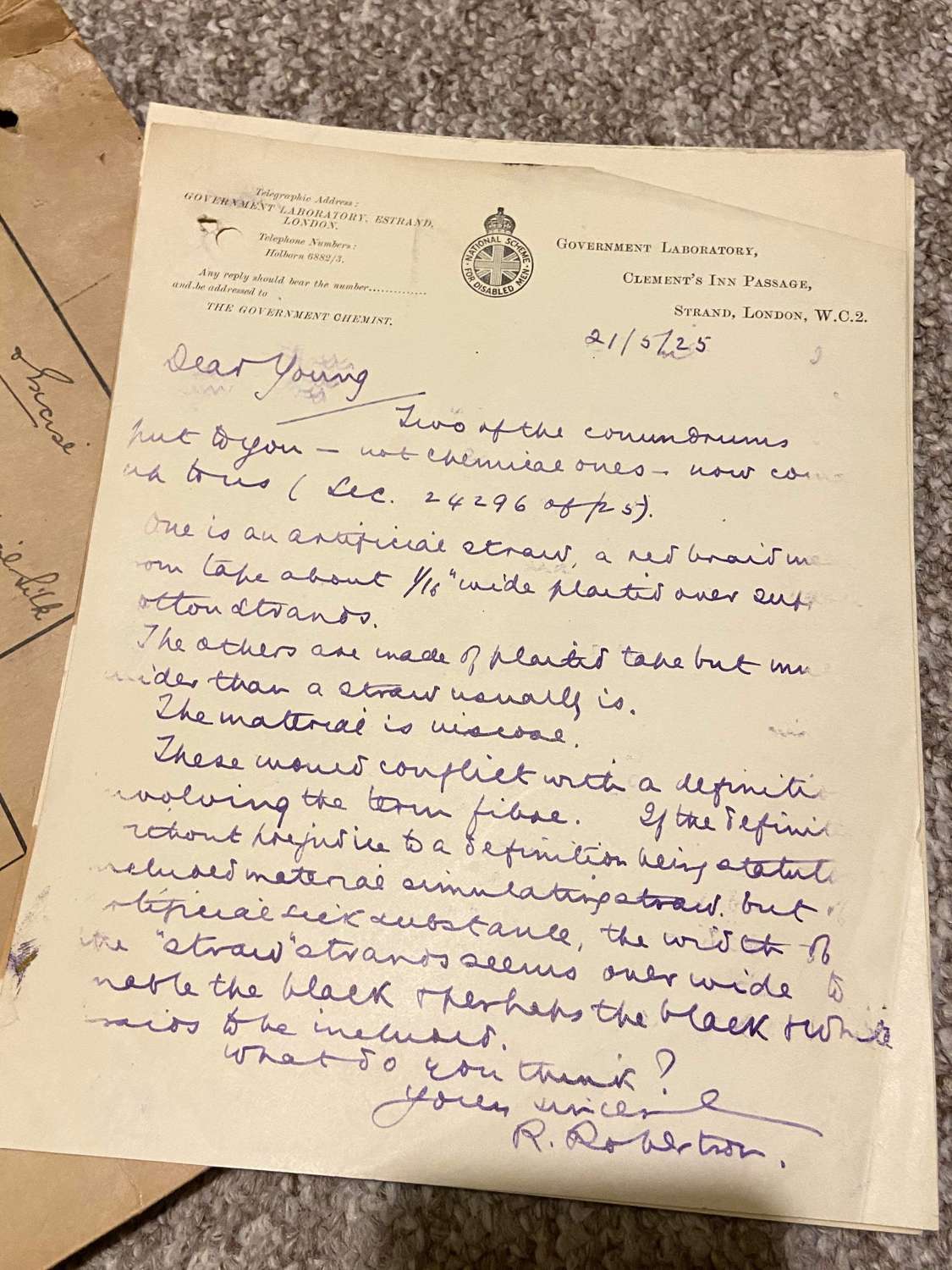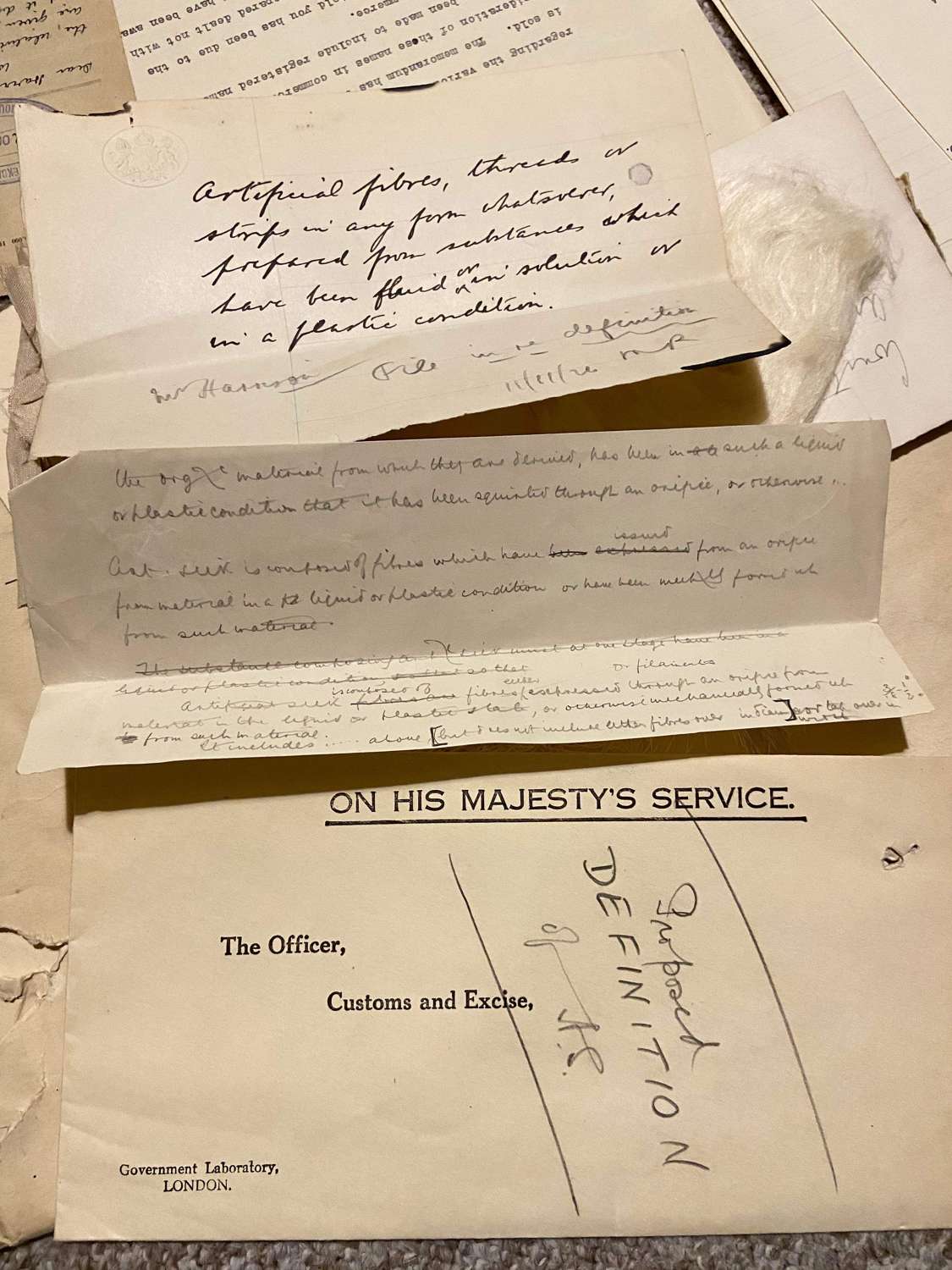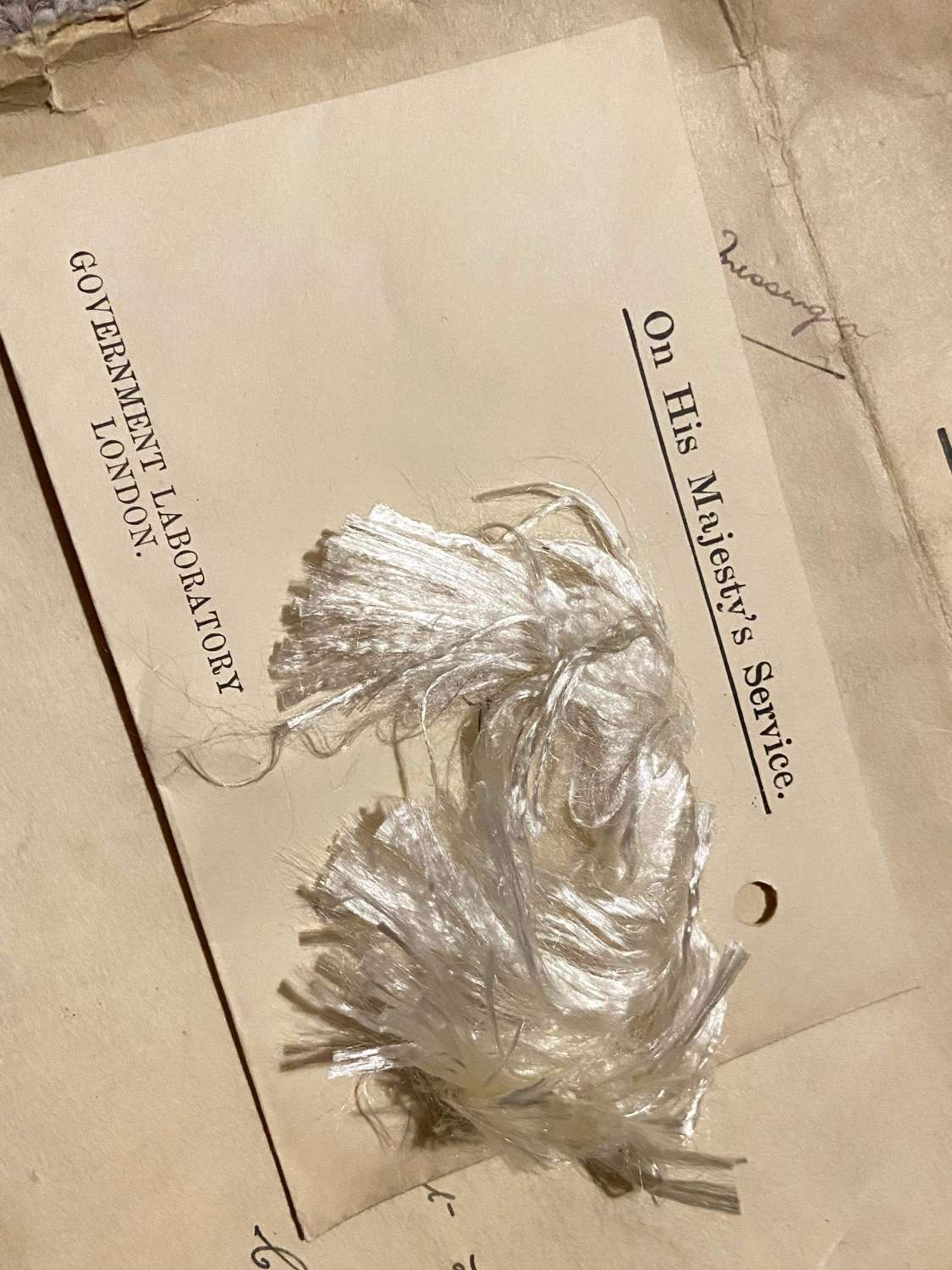
Atlas Antiques |
Email: joshatlasantiques@gmail.com Web site: https://www.atlasantiques.co.uk/ |
|
Code: 12690
For sale is a huge 1920s to 1930s period paperwork grouping. All documents are from and too four main people that worked for the government Laboratory, customs and excise, government chemist, parliament, secretaries office customs house, board of trade, the treasury, the athenaeum pall mall.sw1, and Signed by some of the worlds most important minds! Including Sir Robert Robinson, T W Harrison Government Laboratory, G Stubbs esq cbe, John L Mackie Esq Cbe.
All paperwork is primarily on Sir Robert Robinsons work on Artificial silks and dyestuffs, the paperwork includes at least 30 different experimental artificial silks- there names, classifications and in some cases how they were made. Some of these experimental materials are extremely interesting and upon researching are not used or around today.
For the first time in British history Sir Robert Robinson and his government chemists establish and define the meaning of artificial silks, not left up to interpretation and therefore becoming part of our coded constitution in 1925 and still used in present day. This definition is defunded in the following letter which is embossed with the customs house Emblem:
“11th May 1925
Dear Robertson
Mr. Hemmeraley, the Member of Parliament for Stockport, suggested in yesterday's Debate a definition of artificial silk, nemely, "filements of cellulose re-solidified from various solutions". He afterwarde gave it to the Chancellor of the Exchequer, and I should therefore be glad to be able to give the latter your opinion there on.
But our feeling generally is against having any scientific definition at all, and we are confirmed in this opinion by the fact that, so far as we can trace, foreign countries do not attempt to define artificial silk in their tariffs. After all, the object is to tex. what is commercially known as artificial silk and it seeme to me that if we have a scientific definition a manufacturer might, by making some comparatively small alteration in his processes, cheat the Exchequer of the duty which is its due. I should be very glad to have your early advice on the subject of the matter as well as on mr Hanmesleys suggestion. Yours sincerely Sir Robert Roberen., F.R.S. K.B.E & Mr Hambleton”
A section of the paperwork also includes minuet sheets with government, Including a minuet sheet for 6th may 1925 with Mr. Harris, To ask Mr. Chancellor of the Exchequer, if he will state how it is proposed to define artificial silk for the purpose of imposing the now duties. Thursday 14th May. Detailed documents on proposed new taxes and import duties for any material that now falls under the term “artificial silk” in 1925 can also be seen in this paperwork grouping. Draft/ plans for new laws introduced in 1925, are also amongst this document lot (laws of which are in place today) the drafts for these laws can be seen here:
“GENERAL ORDER No. 1926 d Finance Act, 1925. Artificial Silk - "Through Ticket" Scheme. 1. Paragraph 8 of Part III of the Second Schedule to the Finance Act, 1925, authorises the Board to make regulations for the delivery without payment of duty of artificial silk, either imported or home made, for use in the manufacture of tissues, containing artificial silk and other fibre, intended for exportation. The se regulations (Statutory Rules and ürders, 1926, (No.929) are printed in Appendix III. 2. Scope of "Through Ticket" scheme. The scheme will apply to cases where an exporter is in a position at the time he gives an order to a manufacturer for particular parcels of tissues made of cotton or other fibres ("piece goods") and or containing artificial silk, to ear-mark such parcels for exportation. The scheme will also apply to a manufacturer of piece goods containing artificial silk who is himself an exporter, and is able to earmark particular parcels for exportation prior to manufacturing them. While in the following paragraphs the expressions "exporter" and "manufacturer" are used for convenience to indicate two different persons, the scheme will thus apply both to the non-manufacturing exporter and also to the manufacturer exporter.”
Within this paperwork grouping there is also an “official House of Commons report” Summing the work of Sir Robert Robinson & Mackie within the government laboratories, customs house, Whitehall there is an official report which sums up most of this research, experiments, discoveries and legal aspects in the:
“OFFICIAL REPORT from the Parliamentary Debates
HOUSE OF COMMONS.
VOL. 183. No. 65.
MONDAY, 11th MAY, 1925.
QUESTIONS TO MINISTERS:
Licensed Premises (Disinterested Management). Foreign Office Memorandum (Alleged Publication).
WAYS AND MEANS [Report, 28th April]:
Budget Resolutions: Silk Duties.
CRIMINAL JUSTICE BILL: Motion for Second Reading-(Sir William Joynson-Hicks). LONDON: PRINTED AND PUBLISHED BY HIS MAJESTY'S STATIONERY OFFICE To be purchased in the manner indicated on the back of this Wrapper.”
Also within this paperwork grouping are multiple memorandums from the government laboratories, customs and excise, government chemists, surveyors of customs and exercise.
Within this document lot there are also three detailed dying processes for the artificial silk (which is the work Sir Robert Robinson was awarded his Nobel prize for on).
Within this document grouping is also a five page spread on the war effort and how Sir Robert Richardson had to categories the importance of his staff working with him at the laboratories and which members of his staff seemed less valuable and could be sent of in aid of the war effort, as silk and artificial silk wasn’t top concern for the war department.
History of Sir Robert Robinson:
Sir Robert Robinson, (born Sept. 13, 1886, near Chesterfield, Derbyshire, Eng.—died Feb. 8, 1975, Great Missenden, Buckinghamshire, near London), Nobel laureate recognised in 1947 for his research on plant dyestuffs (anthocyanins) and alkaloids. In 1947, he also received the Medal of Freedom with Silver Palm. After obtaining his doctorate from Victoria University of Manchester in 1910, Robinson taught at various British universities before being appointed to the Waynflete chair of chemistry at the University of Oxford in 1930, from which he retired in 1955. He was knighted in 1939. Robinson conducted research on the structure and synthesis of many different organic compounds. His early studies of plant pigments enabled him to synthesize anthocyanins and flavones, but his most important studies were undertaken on alkaloids; these are complex, naturally occurring, nitrogen-containing compounds that can have profound biochemical effects on living things. Robinson’s efforts to determine the chemical reactions that form alkaloids in plants led him to discover the structures of morphine (1925) and strychnine (1946). He also formulated a qualitative electronic theory of the structure of organic molecules. His research played a role in the synthesis of penicillin and of certain antimalarial-drugs.
Sir Robert Robinsons awards:
Davy Medal (1930)
Royal Medal (1932)
Copley Medal (1942)
Nobel Prize for Chemistry (1947)
Franklin Medal (1947)
Albert Medal (1947)
Faraday Lectureship Prize (1947)
This is a truly historical grouping that belonged to Sir Robert Richardson, which covers the topic of artificial silks & Dyes during the years 1920s to the early 1940s which contributed towards Sir Robert Richardson being awarded a Nobel Prize for chemistry in 1947. The grouping not only consists of paperwork but experimental materials and artificial silks that could be valuable to the future in the right hands!
This lot will be sent via special delivery (insured) and dispatched within two working days.

